9-to-5 at Home
The pandemic has forced us to take our business home to the office
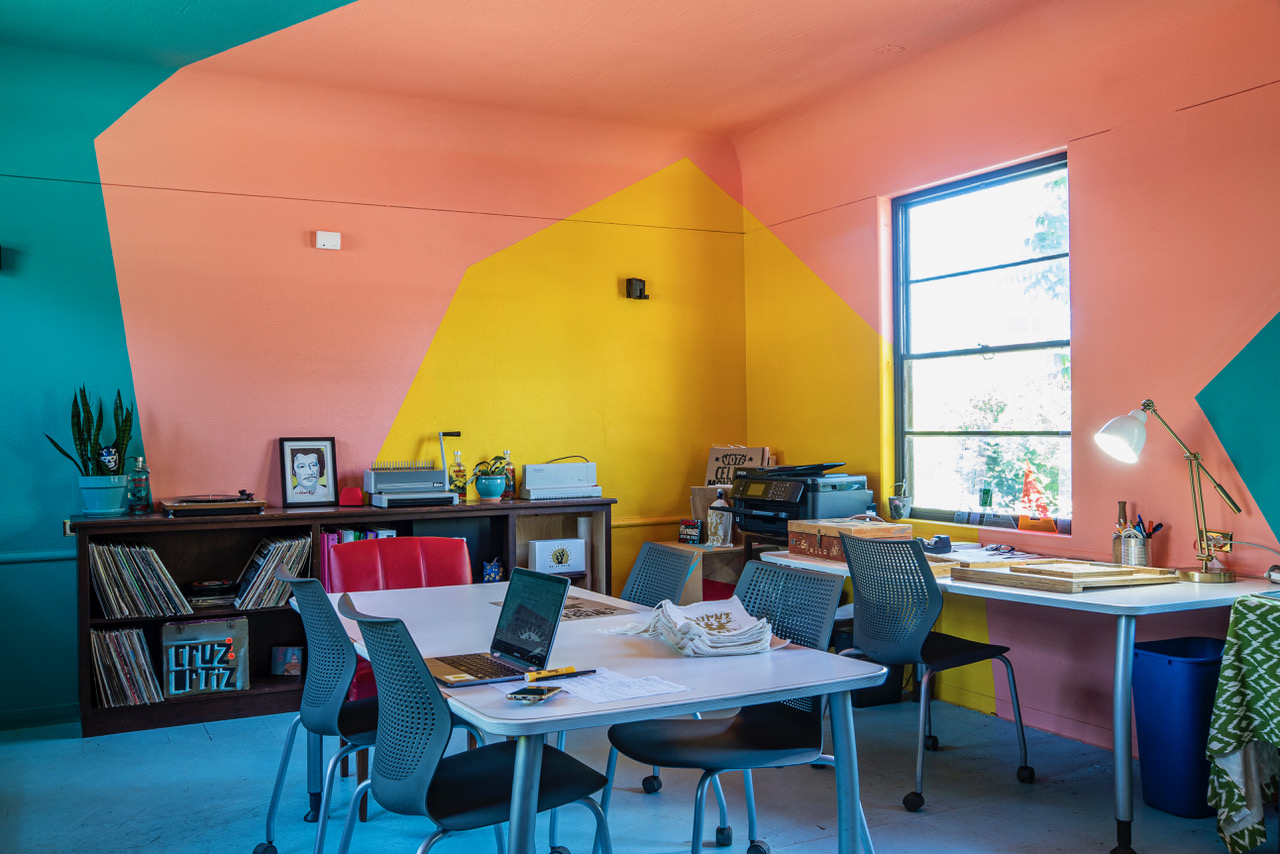
Olivia Flores-Ortiz
Family is one of the main reasons Olivia Flores-Ortiz works at home in a brightly colored space with a central work table. She helps manage her husband Cruz Ortiz’s skyrocketing art career and runs her own design frm, Burnt Nopal, from a Southside live/work compound that was once a railroad warehouse facility. Flores-Ortiz has three young daughters, including one with special needs.
“For us, it means we are just more present, and if something happens, we can take care of it quickly,” she said.
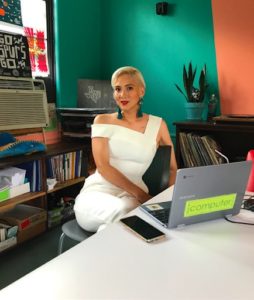
Olivia Flores-Ortiz’s Southside home office, which shares a space with quarters for her kids’ nanny/ nurse, is painted in colors dominant in her artist husband Cruz Ortiz’s palette, including a coral orange, brilliant turquoise and canary-on- steroids yellow. She works at a small desk with a window to watch the world, and holds meetings at a central work table.

Jennifer Shemwell
A tasteful mix of muted grays and greens, with book-stocked shelves, a desk from Anthropologie, family photos in knickknack niches, Jennifer Shemwell’s Alamo Heights home office is a cozy refuge flooded with natural light from two large windows.
“This used to be an open, outdoor porch,” she said of the space’s original purpose. “When we bought the house, I liked it, but I was concerned that it didn’t have an office. My husband, who is an architect, said, ‘That’s easy. We can add the office you want.’ So, this is sort of an addition.”
As the Coronavirus crisis peaked and stay-at-home rules were instituted, Shemwell moved from the headquarters of the local realtor Phyllis Browning Co., where she is president, and worked out of her home full time for a couple of months.
Aside from her laptop and smartphone — essentials for any home office – there are two significant objects in the small space: the first is an artwork, a framed pantheon of classical figures from Wedgewood, which Shemwell inherited from her grandmother. “I remember it hanging in her bedroom,” she said. The other is a light ring, ordered from Amazon, with an adjustable O-shaped light, a black tripod stand, and a clamp for a cell phone. “It connects to my computer and throws off great light to my face on Zoom calls,” she said.
The art grounds her in the past, while the light ring gizmo describes the present — and possibly the future. Is the traditional, 9-to-5 office structure a casualty of the Coronavirus – and another victim of the internet? It’s probably too early to count out the cubicle, but both studies and anecdotal evidence indicate that the home office is going to play a much larger role going forward.
The Harvard Business Review estimates that some 30 million to 40 million people in the United States are either telecommuters or home-based workers. And a Gallup Poll found that almost 60 percent of Americans working from home would prefer to work remotely “as much as possible” when restrictions are lifted.
“It’s technology-driven,” said San Antonio architect Paul Casseb, who has been working from his Northwood home off and on since the ’90s. “Being disciplined and self- accountable – if you have that in you – it’s definitely the way to go.”
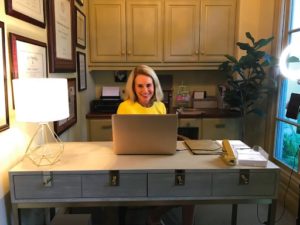
An Anthropologie desk is the centerpiece of Jennifer Shemwell’s Alamo Heights home office, which is done in muted grays, greens and creams. A houseplant soaks up natural light — a home office essential — and diplomas and awards, including a leadership award from the Harvard Business School, are displayed on one wall.
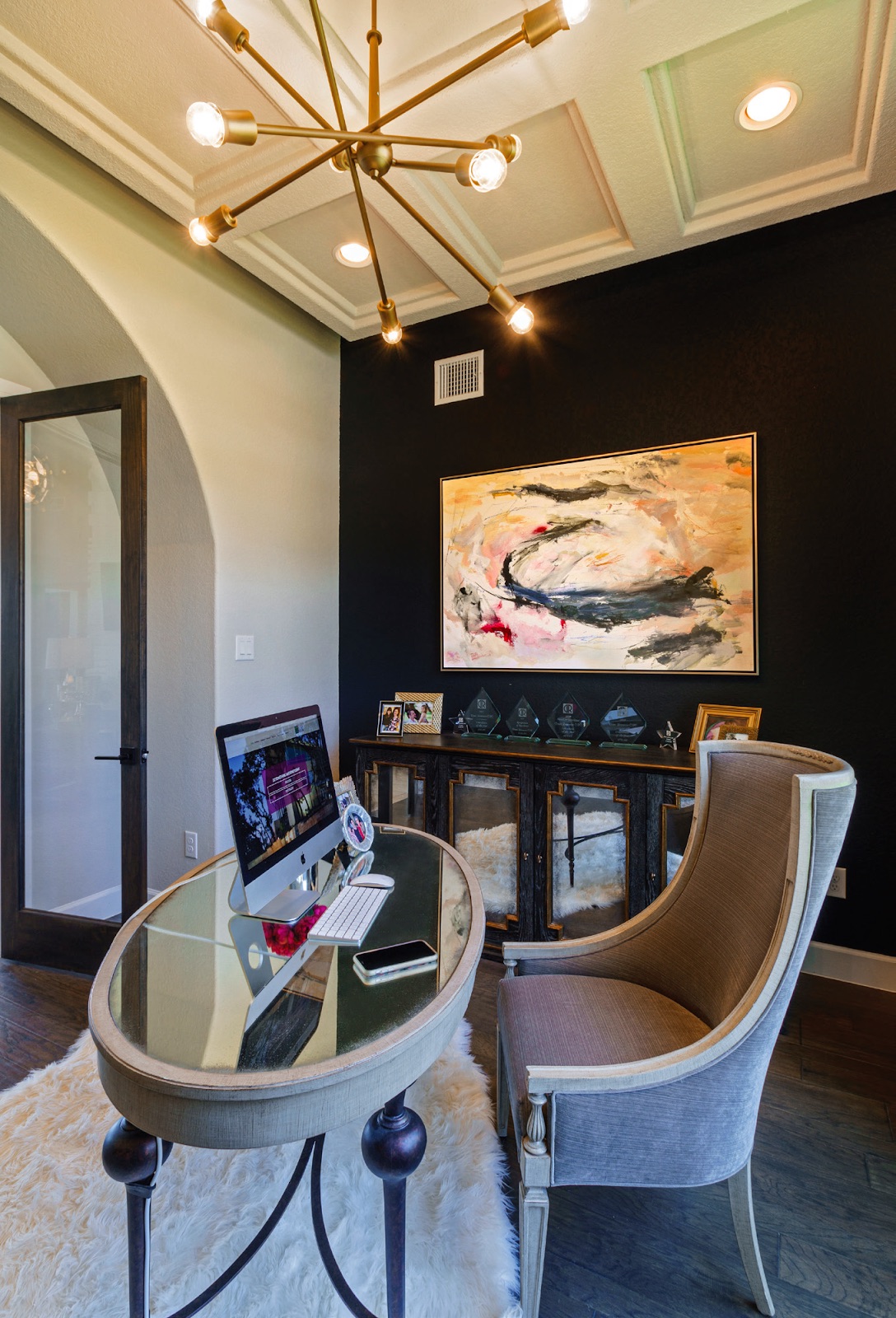
Deana Laramore
A top recruiter for the San Antonio professional services from Deacon Recruiting, Deana Laramore and her husband John recently built a new home in Spring Branch, 45 minutes north of downtown, and designed into the original plans a home office just off the dining room.
During the tightest days of restriction, she rose early, applied her makeup and work clothes, and after breakfast with John and 5-year-old daughter Brooke, went to work — just a few feet away from the kitchen. Her office is a mix of navy blues and grays, with a mirror-topped oval desk and a credenza for files. The space has an 11-foot ceiling and huge windows.
“I’m a very structured person,” she said. “Honestly, I’ve been putting in more hours and getting more done.”
Brooke knows not to disturb her mom when she’s working but occasionally draws a picture and tapes it to the custom glass door of the office. That always gets a hug, no matter how busy the day.
While most home offices are makeshift – a corner of the bedroom, the dining room table — the arrangement is not ideal. The cuteness of the kids or the dog interrupting an important online meeting quickly wears off. That’s why a home office, if you can manage it, is important.
According to Robert Shemwell, a principal at Overland Partners (and Jennifer’s husband), a home office should be out of a home’s traffic, but not isolated or secluded. Natural light is a must, fooding in from with a view outside.
“You need to be able to see changes in the weather and things that are happening outside,” he said. “It boosts your productivity and keeps you from becoming depressed.”
Color is important, too. Muted, neutral hues are best. Lighting should be reflected off the ceiling and walls, backgrounds calm. Good WiFi is essential.
“Every home office now is a broadcast studio,” he said. “What that means is surroundings are important, lighting is important, acoustics is important. Your physical space impacts your psyche, which impacts your performance.”
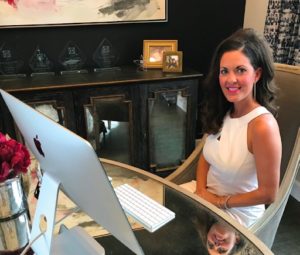
Dana Laramore wanted a “pretty” desk for the home office in her new house in Spring Branch, and she found one with a mirrored top and graceful wrought iron legs at Louis Shanks, along with the high-backed velvet chair and the credenza- even the abstract painting-on the far wall. For conversation pieces, she added a fluffy white rug and a contemporary brass chandelier from Lighting Inc.
BY STEVE BENNETT
PHOTOGRAPHY BY AL RENDON

Steve Bennett
A native Texan, Steve Bennett has written about art, architecture and books for more than 30 years, working for the San Antonio Light, Express-News and Austin American-Statesman. Currently a freelance writer and editor, Steve makes a mean dish of green enchiladas and believes there aren’t many better things in life than the drawings of Vincent Valdez and the Berlin noir detective novels of Philip Kerr.







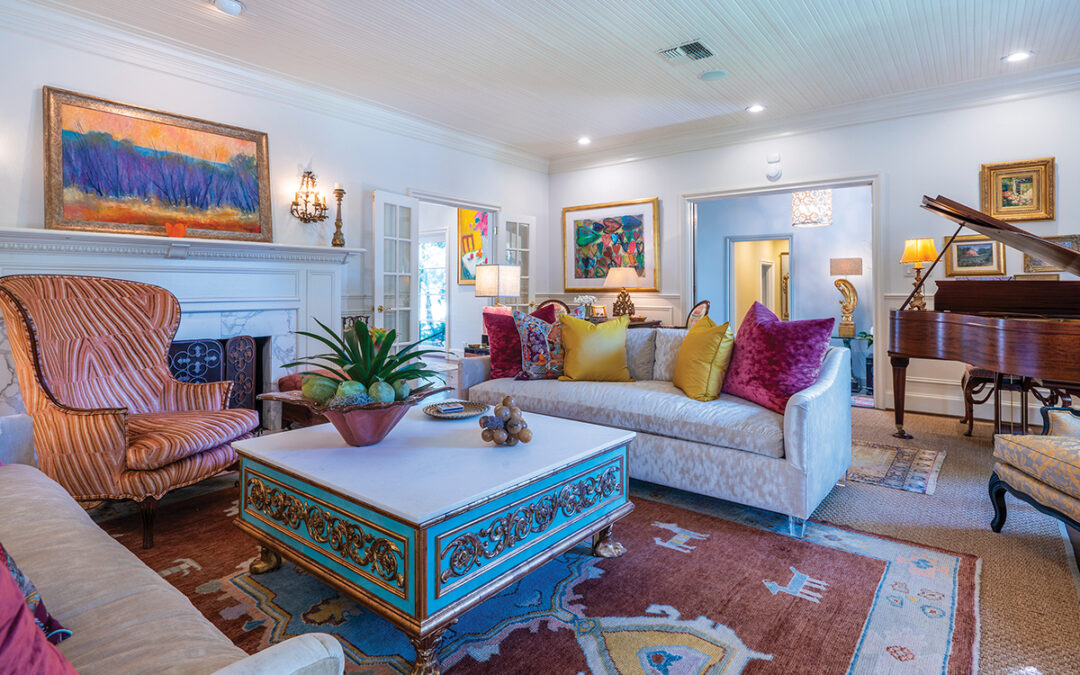

0 Comments